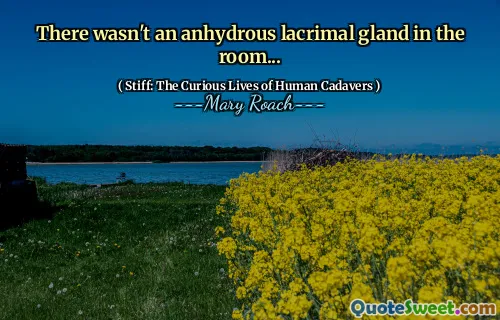He will be lowered into a vat of liquid nitrogen and frozen. From here he will progress to the second chamber, where either ultrasound waves or mechanical vibration will be used to break his easily shattered self* into small pieces, more or less the size of ground chuck. The pieces, still frozen, will then be freeze-dried and used as compost for a memorial tree or shrub, either in a churchyard memorial park or in the family's yard.
The text describes an innovative and unconventional process for body disposition after death, as outlined in Mary Roach's book "Stiff: The Curious Lives of Human Cadavers." It details the steps involved in preserving a body. The individual will first be immersed in liquid nitrogen, which will freeze them. This freezing is crucial for the subsequent phase, where the body is either subjected to ultrasound waves or mechanical vibrations to break it down into small, manageable pieces resembling ground meat.
Once the body is fully processed and reduced to these small pieces, they remain frozen and are then freeze-dried. The final outcome is that these freeze-dried fragments can be repurposed as compost, contributing to the growth of a memorial tree or shrub. This unique approach allows for a more environmentally friendly and meaningful memorial, either in a designated cemetery space or within the deceased's family's own yard.






